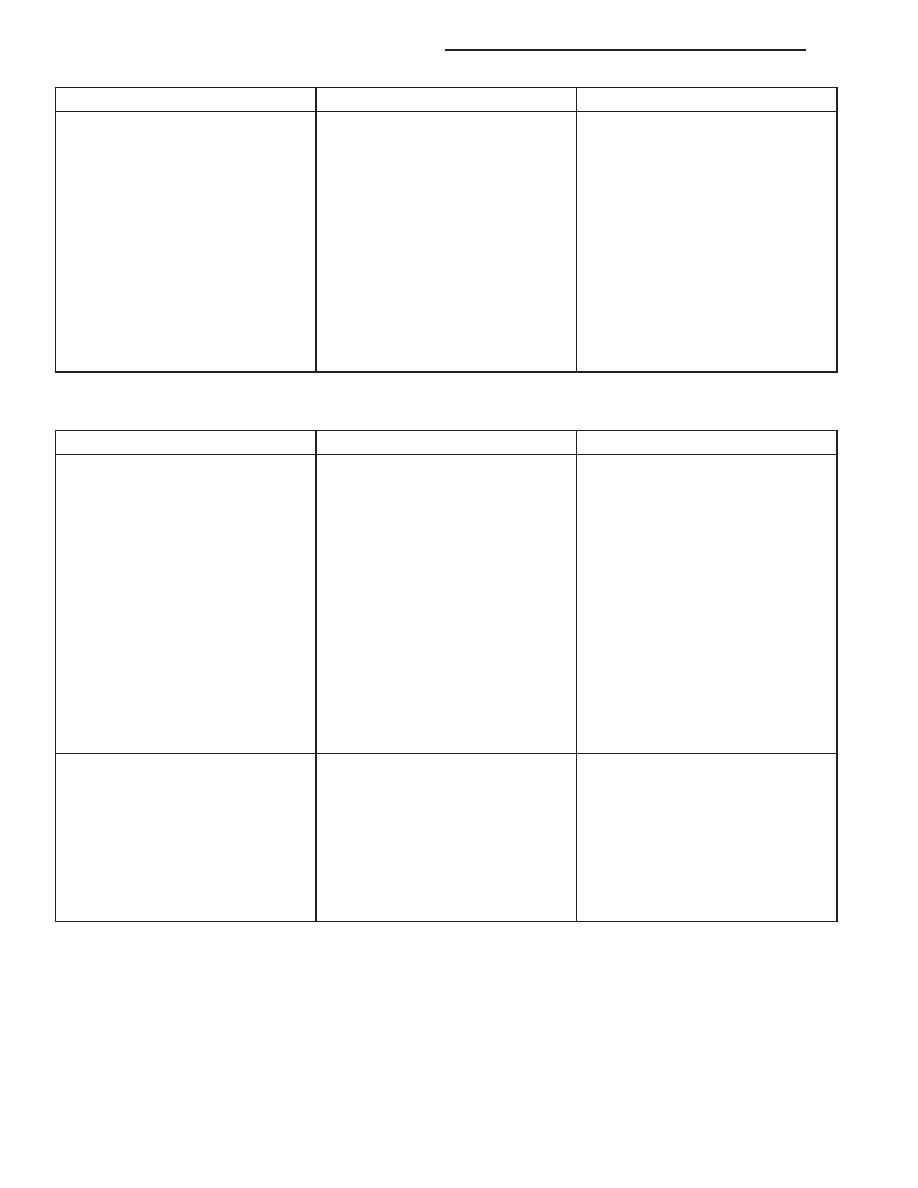Content .. 1607 1608 1609 1610 ..
Chrysler 300/300 Touring/300C, Dodge Magnum. Manual - part 1609

CONDITION
POSSIBLE CAUSES
CORRECTIONS
MAIN BEARING NOISE
1. Insufficient oil supply.
1. (Refer to LUBRICATION &
MAINTENANCE -
SPECIFICATIONS)
2. Low oil pressure.
2. Check oil pump, if Ok, check rod
and main bearings for excessive
wear.
3. Thin or diluted oil.
3. Change oil and filter.
4. Excessive bearing clearance.
4. Replace as necessary.
5. Excessive end play.
5. Check thrust washers for wear.
6. Crankshaft journal out-of round.
6. Service or replace crankshaft.
7. Loose flywheel or torque
converter.
7. Tighten to correct torque
DIAGNOSIS AND TESTING - ENGINE DIAGNOSIS - PERFORMANCE
CONDITION
POSSIBLE CAUSE
CORRECTION
ENGINE WILL NOT START
1. Weak battery
1. Charge or replace as necessary.
2. Corroded or loose battery
connections.
2. Clean and tighten battery
connections. Apply a coat of light
mineral grease to the terminals.
3. Faulty starter.
3. (Refer to 8 - ELECTRICAL/
STARTING - DIAGNOSIS AND
TESTING).
4. Incorrect spark plug gap.
4. (Refer to 8 - ELECTRICAL/
IGNITION CONTROL/SPARK PLUG
- CLEANING).
5. Dirt or water in fuel system.
5. Clean system and replace fuel
filter.
6. Faulty fuel pump, relay or wiring.
6. (Refer to 9 - ENGINE -
DIAGNOSIS AND TESTING)
ENGINE STALLS OR ROUGH IDLE
1. Idle speed set to low.
1. (Refer to 9 - ENGINE -
DIAGNOSIS AND TESTING)
2. Vacuum leak.
2. Inspect intake manifold and
vacuum hoses, repair or replace as
necessary.
3. Incorrect engine timing.
3. (Refer to 9 - ENGINE/VALVE
TIMING - STANDARD
PROCEDURE).
9 - 2460
ENGINE - 6.1L SERVICE INFORMATION
LX